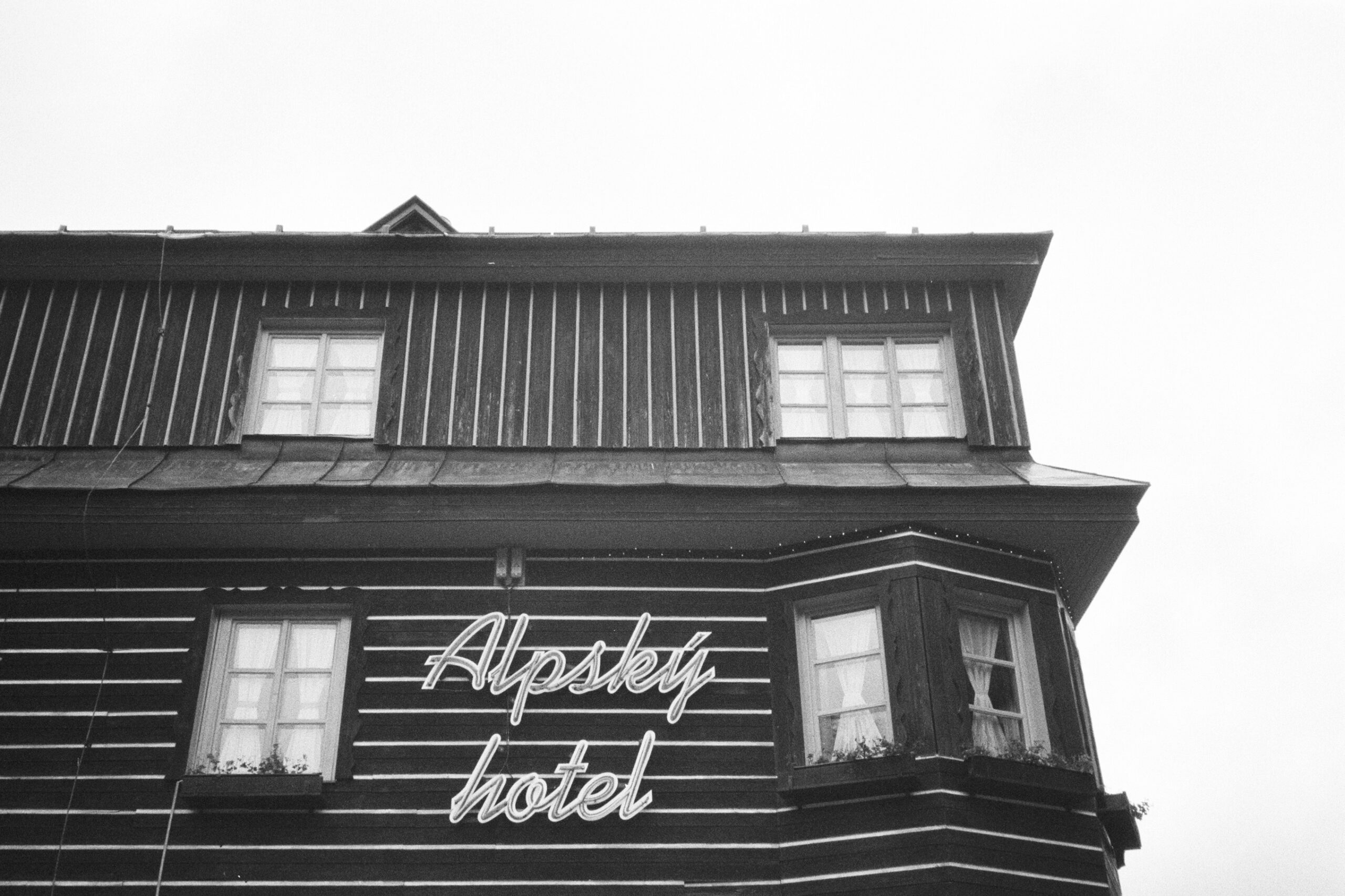I cross the Elbe on a little wooden bridge so narrow that before I drive across I get out to see if the car will fit. For all it’s historical significance, here the river resembles a regular old creek: brown and a little swollen from all the rain.
Something feels different on the other side of the Elbe. Grey geese pick through the mud next to abandoned factories. Many of the houses are made from dark log houses with white chinking. Roofs seem larger and droop farther towards the ground. Rather than apple trees, rowan trees line the narrow streets, and in the dusk they look like so many red matches.
I stay overnight at the Hotel Alpský in a bare yellow room. Cold air from the Carpathians blows in and I sleep well for the first time on the journey.
When I wake up, I notice a picture hanging over my head: a tiny well in the middle of what looks like a desert. Tiny print underneath the picture reads ‘Source of the Elbe’. When I look it up on a map, I discover it’s only a few kilometers away, and that there’s a road leading there directly from the Alpský which seems to continue on to the Polish border, which is where I intend to go.
Ten minutes into the drive I’ve almost run over some Czech tourists and realize that I’m driving on a hiking trail in a nature reserve. So I turn around and take the regular old pass to Poland and do not see the source of the Elbe.

